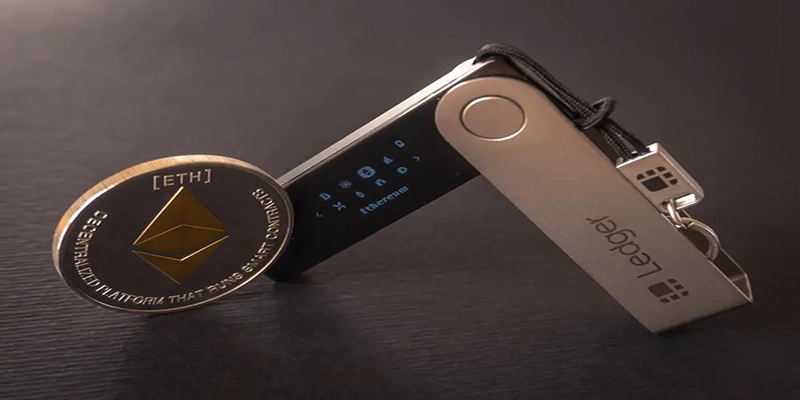The Best 3 List of Scrypt Cryptocurrencies
Three of the five largest cryptocurrencies are those that can be mined. There is a List of Scrypt Cryptocurrencies: Bitcoin (BTC), Ethereum (ETH), and Litecoin (LTC) (LTC). Each one functions as part of the proof-of-work consensus framework. However, they don’t all employ the same hashing technique.
Bitcoin uses the SHA-256 hash function, whereas Ethereum uses the Ethash Proof of Work hashing method. As Proof of Stake becomes the only consensus mechanism, PoW will soon be phased out on Ethereum. However, the Scrypt algorithm is what Litecoin employs. Other Proof-of-Work blockchains also utilize the Scrypt algorithm than Litecoin.
Some background on SHA-256 coins has already been provided. In a similar vein, we’ll catalogue Scrypt-based digital currencies here.
This short introduction will cover the List of Scrypt Cryptocurrencies and basics of the scrypt mining algorithm before diving into Scrypt currencies.
What Is Meant By The Scrypt Hashing Algorithm?
Compared to other Proof of Work algorithms like Crypto Night and Equihash, scrypt was developed for a different purpose.
Scrypt is a cryptographic key derivation mechanism that relies on secret questions and answers for authentication (KDF). Password-based KDFs are computationally demanding on purpose, and they are effective at thwarting brute-force assaults.
Because of its high computational and memory requirements, the Scrypt hashing algorithm was initially implemented exclusively for Tarsnap’s cloud storage service. Colin Percival developed the algorithm. Stronger Key Derivation through Sequential Memory-Hard Functions was the title of a paper written by Colin and published in May 2009.
What is The Point of Using Scrypt?
Scrypt delivers high security and is one of the safest hash algorithms. It also strengthens network security by deterring assaults from specialized hardware as a memory-hard method. It is why scrypt is ideal for decentralized applications.
Due to significant quantities of memory needs implementing large-scale bespoke hardware attacks against scrypt becomes pricey. This hash algorithm was created to force miners to produce numbers rapidly. Processor RAM (Random Access Memory) stores these randomly generated numbers. Then it has to be continuously accessed before result submission.
Its memory requirements make it a potential countermeasure to the centralized cryptocurrency mining caused by specialized hardware like ASICs and FPGAs. It is the most popular alternative to Bitcoin’s SHA-256 hashing algorithm because of its effectiveness against ASIC mining rigs.
History of Scrypt in Cryptocurrencies
In the present day, Scrypt is employed by various proof-of-work digital currencies. Tenebrix (TBX) was created in September 2011 and was the first cryptocurrency to use scrypt as a PoW hashing method. There is no trace of such endeavour anymore; it was doomed to failure. Scrypt was later used by altcoins such as Litecoin and Dogecoin.
Created to enhance SHA-256, Scrypt has now found widespread use on blockchain networks.
Litecoin, among other projects, used scrypt as its hash function because of the high level of security it provides. Among the most important is its resistance to ASICs (Application-Specific Integrated Circuits). However, it is not the case anymore.
Technology for Mining Scrypt and Scrypt Miners
Initially, Scrypt was designed to be resistant to both ASICs and FPGAs. That is to say, no specialized pieces of hardware were used in the Litecoin network. There were no CPU miners involved in Litecoin mining. Nonetheless, the first application-specific integrated circuit (ASIC) for the scrypt algorithm debuted in 2013. Since then, Litecoin and other Scrypt-based currencies have been mined exclusively using ASICs and specialized hardware.
In contrast, ASICs excel. The hash power they produce exceeds that of CPUs and GPUs. Anyone not using the specialized equipment to mine will incur a loss.
Some ASICs can mine scrypt coins, but only the most sophisticated ones are worthwhile. Only the following miners, ranked by ASIC miner value, can profit from mining scrypt currencies at this time.
- Innosilicon A6+ LTCMaster,
- Innosilicon A6 LTCMaster,
- FusionSilicon X6 Miner,
- Innosilicon A4+ LTCMaster
- Bitmain Antminer L3+
As more complex ASIC mining technology becomes available, this will eventually alter. The following list of scrypt coins should only be mined if you possess one of the appropriate hardware rigs.
It’s important to remember that scrypt networks have a lower hash rate than SHA-256 networks, which is reflected in their overall hash power—the reason being: the high demand for RAM.
Alright! To what currencies does the Scrypt algorithm apply?
Types of Scrypt Coins
Litecoin (LTC) and Dogecoin (DOGE) are the two most notable projects using the scrypt algorithm (DOGE).
Dogecoin (DOGE) was introduced in 2013, and Litecoin (LTC) came out in 2011. Litecoin advertised itself as an ASIC-proof network at its release. To no avail, though.
On the other hand, Dogecoin is a parody currency created by forking Litecoin. However, it attracted a significant fan base and is now a prominent cryptocurrency.
Hundreds of more currencies use the scrypt hashing method besides these two. However, we will not go over the whole list here. Now that most scrypt coins have since died, doing so would be futile. PoS (proof-of-stake) coins, which cannot be mined, have also been left out.
List of Scrypt Cryptocurrencies
Here, we have only listed the most popular POW (proof-of-work) mineable scrypt currencies with a decent amount of daily trading volume.
- Litecoin – LTC
- Dogecoin – DOGE
- MonaCoin – MONA
- Advanced Internet Blocks – AIB
- Einsteinium – EMC2
Coins with low market caps that use the scrypt hashing algorithm: - Aryacoin – AYA
- Gulden – NLG
- Viacoin – VIA
- Lightning Bitcoin – LBTC
- GridCoin – GRC
- PotCoin – POT
- FLO – FLO
- Quasarcoin – QAC
- VeriCoin – VRC
- Omni – OMNI
- Matrix AI Network – MAN
- Gulden – NLG
Scrypt-based hybrid Proof-of-Work/Proof-of-Stake coins: - WhiteCoin – XWC – Hybrid – PoW & PoS
- ReddCoin- RDD – Hybrid – PoW & PoS
- SaluS – SLS – Hybrid – PoW & PoS
Scrypt-based multi-algorithm coins: - DigiByte – DGB (Multi)
- Verge – XVG (Multi)
Conclusion: List of Scrypt Cryptocurrencies
In the end hope, you get all your required information about the list of scrypt cryptocurrencies. This article is helpful for you to find accurate knowledge about the list of the scrypt cryptocurrencies.







